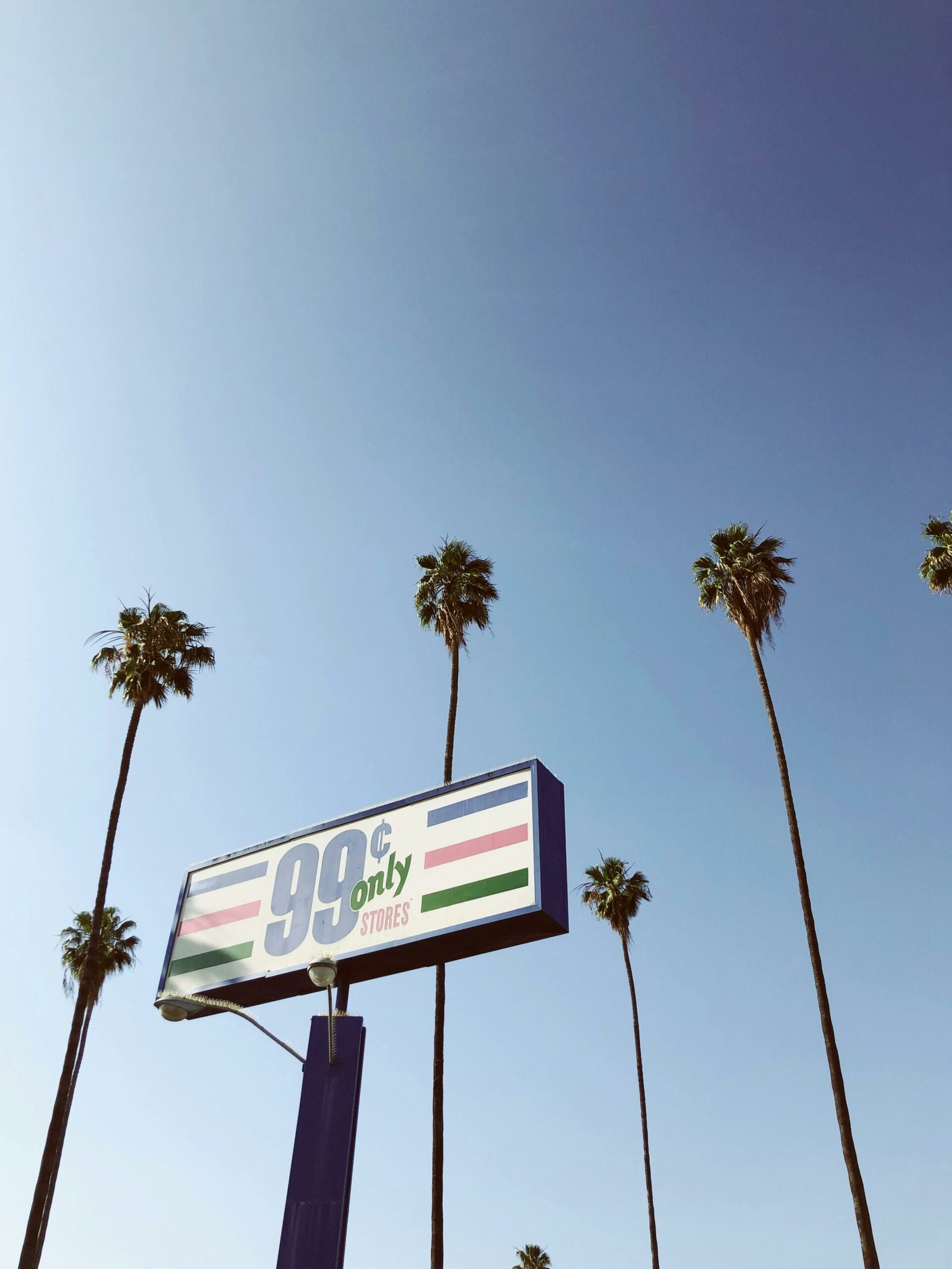In an era where relying solely on Google for online traffic is becoming increasingly unreliable, diversifying traffic sources has never been more critical. This article explores how Meta ads can serve as a robust alternative, offering a thorough guide on planning and building effective sales funnels, targeting strategies, budget recommendations, and practical implementation details.
You will discover why Meta ads are considered one of the safest traffic sources and how they can help stabilize and grow your business. Additionally, insights from industry experts, real-world examples, and high-level debates on the effectiveness of ad platforms will provide you with the necessary tools to adapt to the rapidly changing digital landscape.

This image is property of i.ytimg.com.
Contextualizing the Need for Diversification
SEO Challenges with Google
In recent years, relying solely on Google for traffic has become increasingly precarious for online businesses. The landscape has shifted significantly, making it harder to achieve consistent traffic results through traditional SEO efforts. Google’s search algorithm is notoriously complex and ever-changing, creating an unstable environment for businesses that depend on search rankings for visibility and customer acquisition. Consequently, businesses must navigate fierce competition, keyword ranking battles, and the perpetual risk of algorithmic penalties that could plummet their site’s visibility overnight.
Google Algorithm Updates
Google’s frequent algorithm updates have exacerbated the challenges posed by SEO. With each update, the rules can drastically change, affecting website rankings and traffic. Some updates are minor, while others, like the Core Web Vitals update, can cause significant shifts in site performance and visibility. This unpredictability makes it difficult for businesses to maintain a reliable stream of traffic without continuously adapting their strategies, often requiring significant time and resource investments.
Limitations of Sole Traffic Reliance
Relying solely on Google traffic is a high-risk strategy. Fluctuations in algorithm dynamics can lead to volatile traffic patterns, directly impacting revenue. Additionally, over-dependence on a single traffic source creates vulnerability: any negative change regarding Google’s policies or updates can have catastrophic repercussions. Diversification across multiple traffic sources is essential to mitigate these risks, ensuring a more resilient and sustainable business model.
Why Meta Ads Are a Reliable Alternative
Security in Meta Ads
Meta ads (formerly Facebook ads) offer a more secure and stable traffic source compared to the unpredictable nature of Google SEO. By leveraging Meta’s advanced advertising platform, businesses can target specific demographics, interests, and behaviors with precision. Importantly, Facebook’s ongoing commitment to advertisers’ success helps ensure that their tools and algorithms are continually optimized for performance and reliability.
Comparison with Other Platforms
Compared to other advertising platforms such as Google Ads, Microsoft Advertising, or even TikTok, Meta ads provide unique advantages. The ability to tap into the extensive user base of Facebook and Instagram, combined with robust targeting options, sets Meta ads apart. While Google Ads cater primarily to search intent, Meta ads utilize an interest-based model, which can be advantageous for promoting products to potential customers who may not yet be actively searching for them.
Success Metrics
Success with Meta ads can be quantitatively measured through key performance indicators (KPIs) like return on ad spend (ROAS), cost per acquisition (CPA), and click-through rates (CTR). These metrics provide clear and actionable insights into the effectiveness of campaigns, allowing for continuous improvement. Many businesses report a considerable ROAS, often seeing a $2-$5 return for every dollar spent, highlighting the platform’s potential for driving profitable traffic.
Planning a Sales Funnel with Meta Ads
Understanding the Sales Funnel Stages
Effective sales funnels encompass several stages: Awareness, Interest, Decision, and Action (AIDA). Meta ads can be tailored to align with each stage of this customer journey. Awareness campaigns focus on capturing potential customers’ attention, while interest and decision stages involve nurturing leads with relevant content. Finally, the action stage is designed to convert leads into customers, leveraging persuasive calls to action and optimized landing pages.
Customizing Funnels for Different Products
Different products require tailored sales funnels. High-ticket items, for example, might necessitate a longer funnel with more touchpoints, educational content, and robust nurturing sequences. Conversely, lower-cost or impulse-buy products can benefit from shorter funnels designed to quickly capture interest and drive immediate conversions. Meta’s flexible advertising platform allows for the customization and adaptation of funnels to suit the unique characteristics of each product.
Tools for Building Effective Funnels
Numerous tools are available to assist in building effective sales funnels. Platforms like ClickFunnels and Leadpages provide comprehensive solutions for creating, managing, and optimizing sales funnels. Additionally, Customer Relationship Management (CRM) systems like HubSpot and email marketing tools like ActiveCampaign can help manage leads throughout the funnel, automate follow-ups, and personalize communications to enhance conversion rates.
Strategies for Targeting Meta Ads
Angling Ads for Different Audiences
Crafting compelling ad creatives that resonate with different audience segments is crucial for maximizing engagement and conversions. This involves creating tailored messaging and visuals that appeal to the specific demographics, interests, and pain points of each audience group. For instance, ads targeting young professionals might emphasize convenience and modernity, while those aimed at retirees could highlight reliability and value.
Leveraging Data for Targeting
Data is the cornerstone of effective ad targeting. Meta’s platform offers extensive insights into user behavior, demographics, and interests, enabling advertisers to create highly targeted campaigns. By analyzing this data, businesses can identify the most lucrative audience segments, refine their targeting parameters, and continually optimize their campaigns to enhance performance and ROI.
Utilizing Facebook’s AI for Better Results
Facebook’s AI and machine learning capabilities play a pivotal role in improving ad performance. These technologies can automatically fine-tune targeting, bidding, and creative elements based on real-time performance data. By leveraging Facebook’s AI, businesses can ensure their ads are served to the most relevant audiences, increasing the likelihood of achieving higher engagement and conversion rates.

This image is property of images.pexels.com.
Budget Recommendations for Ad Spending
Initial Budget Considerations
When starting with Meta ads, it’s advisable to begin with a modest budget and gradually scale as you gain insights and optimize your campaigns. An initial budget of $5-$20 per day can provide sufficient data to assess performance and make necessary adjustments without significant financial risk. The key is to test various ad sets and creatives to identify the most effective combinations.
Scaling Ad Spend for Growth
As your campaigns demonstrate positive results, you can incrementally increase your ad spend to capitalize on successful strategies while maintaining an efficient ROI. Scaling should be systematic, with careful monitoring of performance metrics to ensure that increased spending continues to drive proportional growth in conversions and revenue. Doubling the budget every few weeks, contingent on sustained success, is a prudent approach.
Monitoring and Adjusting Budgets
Effective budget management requires continuous monitoring and adjustment based on campaign performance. Utilize Meta’s reporting tools to track key metrics and identify trends. If certain ad sets or creatives underperform, reallocate funds to high-performing areas or test new strategies. Continuous optimization is essential to achieve maximum efficiency and ROI.
Practical Implementation Inside Meta Ads Manager
Setting Up Your First Campaign
Setting up a campaign in Meta Ads Manager involves selecting your campaign objective, defining your target audience, and setting your budget and schedule. Objectives can range from brand awareness to conversions, depending on your goals. Targeting parameters should be based on demographic and interest data relevant to your audience. Finally, establish a budget and schedule that align with your testing and scaling strategy.
Navigating Ad Sets and Creatives
Within each campaign, ad sets allow for further targeting and budgeting flexibility. Different ad sets can be created to test various audience segments, placements, and bidding strategies. Creatives represent the visual and textual elements of your ads, requiring meticulous attention to design, copywriting, and overall messaging. A/B testing different creatives within ad sets can reveal the most compelling combinations.
Analyzing and Optimizing Performance
Ongoing analysis and optimization are critical for sustained success in Meta ads. Utilize the Ads Manager dashboard to monitor key performance metrics such as ROAS, CTR, and CPA. Regularly review these metrics to identify areas for improvement and implement data-driven optimizations. This may involve tweaking targeting parameters, adjusting bids, refreshing ad creatives, or refining landing pages to enhance user experience and conversions.

This image is property of images.pexels.com.
Creating Compelling Ad Creatives
Elements of High-Performing Video Ads
Video ads tend to perform exceptionally well on Meta platforms, thanks to their ability to capture attention and convey messages dynamically. High-performing video ads often include a captivating hook within the first few seconds, clear and concise messaging, strong visuals, and a compelling call to action. Utilizing subtitles can also enhance engagement, as many users watch videos without sound.
Effective Use of Static Images
While video content is powerful, static images remain an important component of ad creatives. Successful static ads typically feature high-quality imagery, bold headlines, and compelling visual design that stands out in the news feed. Concepts such as before-and-after visuals or straightforward product showcases can be highly effective.
The PAS Framework for Ads
The Problem-Agitate-Solution (PAS) framework is a proven technique for crafting persuasive ad copy. This framework begins by identifying a problem the target audience faces, then agitating that problem to highlight its impact, and finally presenting your product or service as the ideal solution. This approach can create emotional resonance and drive stronger engagement and conversions.
Utilizing Recommended Tools and Platforms
Community and Course Hosting Platforms
For businesses focusing on educational content, community and course hosting platforms like Circle, Thinkific, and Teachable provide robust solutions. These platforms enable seamless course creation, management, and delivery, fostering an engaging learning environment for users. They also support community-building features, enhancing user interaction and retention.
Creative and Email Marketing Tools
Effective ad campaigns often rely on auxiliary tools for creative development and email marketing. Tools like Canva facilitate the creation of visually appealing ads, while GeneratePress and GenerateBlocks offer powerful solutions for building engaging landing pages. For email marketing, ActiveCampaign provides sophisticated automation and personalization features that can enhance lead nurturing and customer engagement.
Best Practices for Tool Integration
Integrating various tools and platforms can streamline your advertising and marketing efforts. Establish clear workflows and data syncing mechanisms between your CRM, email marketing software, and advertising platforms. This integration enables cohesive campaign management, accurate tracking, and comprehensive performance analysis, driving more efficient and effective marketing strategies.

This image is property of images.pexels.com.
Case Studies and Real-world Examples
iPhone Photography School
iPhone Photography School provides a compelling example of successful Meta ad utilization. By leveraging high-quality video content, compelling ad copy, and targeted campaigns, they have effectively promoted their photography courses to a broad audience. Their success highlights the potential of Meta ads for driving conversions in the education sector.
Industry Examples of Video Course Success
Numerous industries have achieved remarkable results with Meta ads, particularly in promoting video courses. Businesses in fitness, personal development, and professional training have all leveraged the platform’s targeting capabilities to reach and convert interested audiences. These examples demonstrate the versatility and efficacy of Meta ads across various niches.
Ad-Based Selling Transformation
Businesses have successfully transformed their selling strategies through ad-based models. By shifting focus from organic traffic and passive content strategies to proactive ad campaigns and sales funnels, companies have achieved substantial growth. This transition emphasizes the importance of adopting dynamic and adaptable marketing approaches to thrive in today’s competitive landscape.
Conclusion
Recap of Key Points
To navigate the evolving digital landscape, businesses must diversify their traffic sources. Reliance solely on Google SEO is no longer viable due to algorithmic volatility and intense competition. Meta Ads provide a robust alternative, offering secure, targeted, and scalable traffic solutions through precisely crafted sales funnels.
Final Thoughts on Diversification
Diversifying traffic sources mitigates risk and positions your business for sustained growth. Meta Ads, with their advanced targeting capabilities and comprehensive data insights, enable businesses to reach new audiences, drive conversions, and build resilient revenue streams.
Call to Action for Implementation
Implementing the strategies discussed will require deliberate planning and execution. Start by setting up your Meta Ads account, define your campaign goals, and begin testing with a modest budget. Continuously analyze performance, optimize your campaigns, and scale your efforts strategically. For additional support, consider utilizing tools like ActiveCampaign for email marketing and Canva for designing compelling ads. Finally, remember that diversification is an ongoing process, essential for long-term business success.